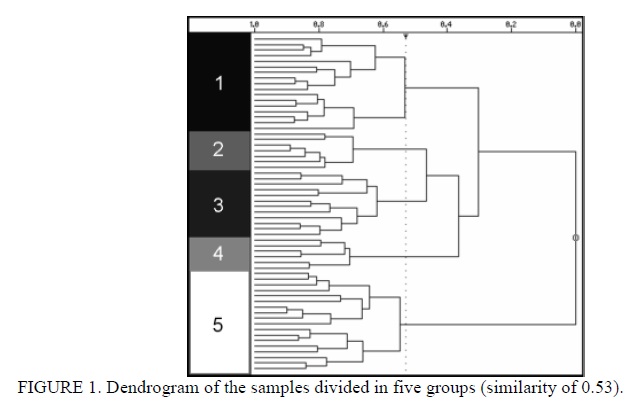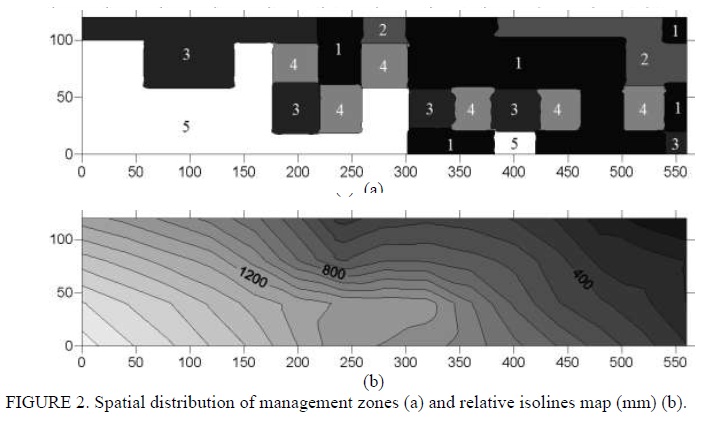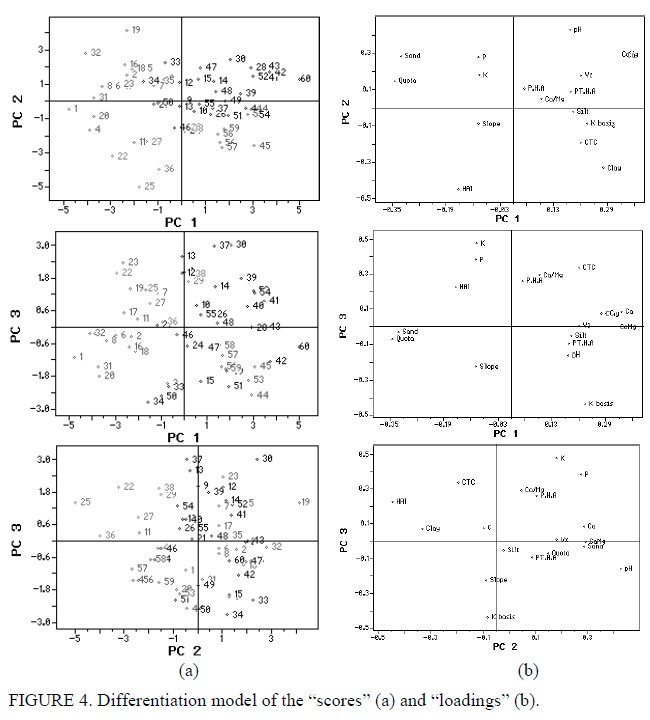The study of spatial variability of soil and plants attributes, or precision agriculture, a technique that aims the rational use of natural resources, is expanding commercially in Brazil. Nevertheless, there is a lack of mathematical analysis that supports the correlation of these independent variables and their interactions with the productivity, identifying scientific standards technologically applicable. The aim of this study was to identify patterns of soil variability according to the eleven physical and seven chemical indicators in an agricultural area. It was used two multivariate techniques: the hierarchical cluster analysis (HCA) and the principal component analysis (PCA). According to the HCA, the area was divided into five management zones: zone 1 with 2.87ha, zone 2 with 0.8ha, zone 3 with 1.84ha, zone 4 with 1.33ha and zone 5 with 2.76ha. By the PCA, it was identified the most important variables within each zone: V% for the zone 1, CTC in the zone 2, levels of H+Al in the zone 4 and sand content and altitude in the zone 5. The zone 3 was classified as an intermediate zone with characteristics of all others. According to the results it is concluded that it is possible to separate into groups (management zones) samples with the same patterns of variability by the multivariate statistical techniques.
multivariate analysis; precision agriculture; spatial variability






